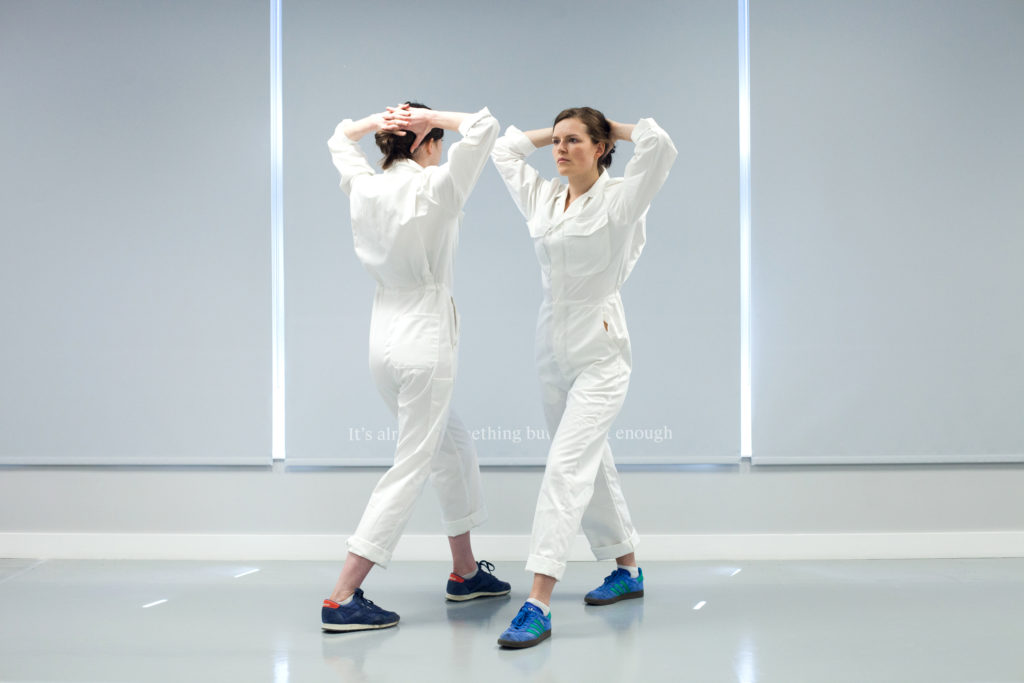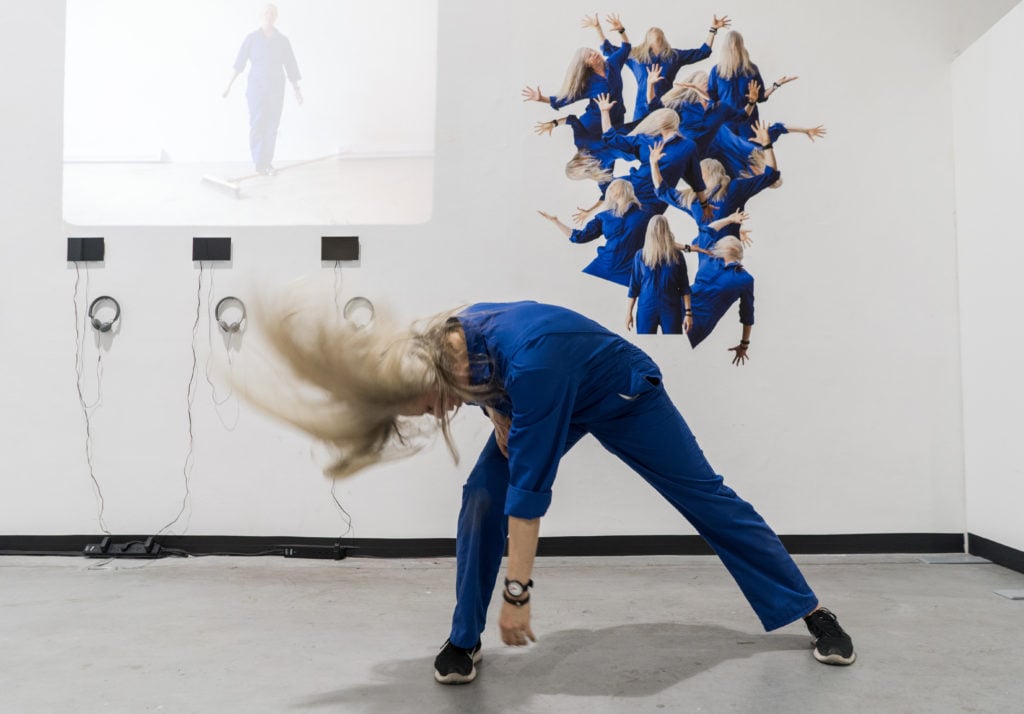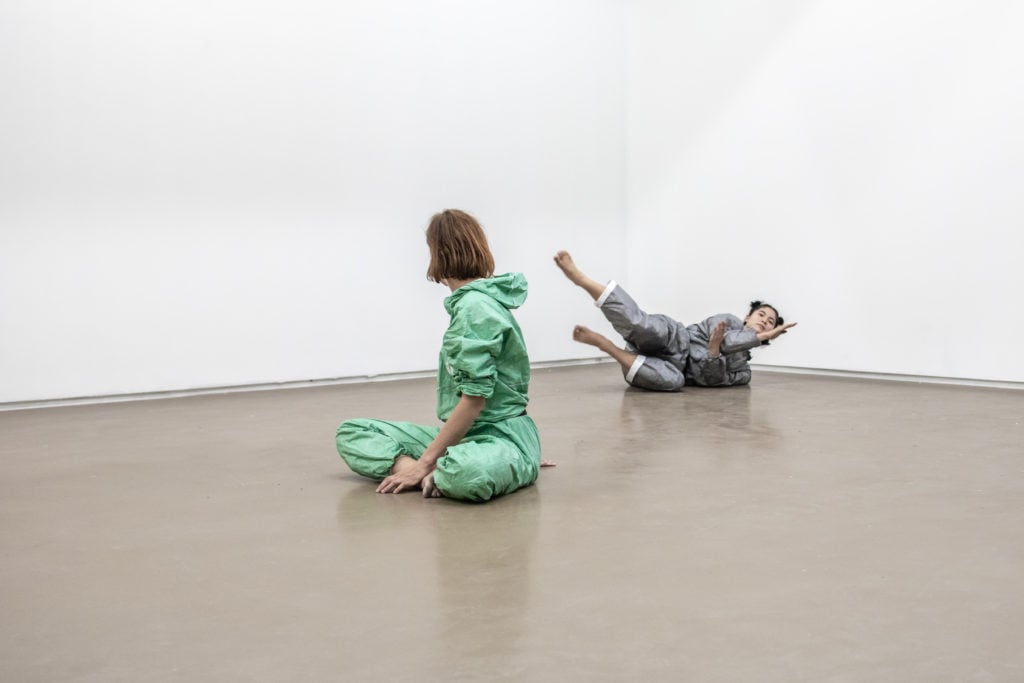Market
Would You Buy a Performance? A New Brussels Fair Tries to Make Art’s Most Elusive Medium Appealing to Collectors
A Performance Affair is on view in Brussels this weekend.

A Performance Affair is on view in Brussels this weekend.

Would you like to own an artwork in which a woman plays with assorted objects laid out on a table? Or perhaps you might be interested in acquiring an industrial fan that delicately balances a balloon in mid-air?
These are among the wares on offer at A Performance Affair, a young art fair in Brussels dedicated to performance art. The medium has long been a tough sell—and to the uninitiated, it can sometimes seem like an art-world parody. But the fair’s founders, Liv Vaisberg and Will Kerr, are hoping to help build a sustainable market around the genre.
The small event opened its second edition in Brussels on Thursday (it runs through Sunday, September 8), coinciding with Brussels Gallery Weekend. In its sophomore year, the fair has expanded and tweaked its structure in an effort to better define what, exactly, is for sale; how you can buy it; and under what terms you can show it.
The 30 participants (up from 23 last year) are exhibiting by way of a timed schedule, as opposed to in more traditional booths. In the lobby area, a faux-analog panel referencing an airport departures screen tells visitors where and when performances are happening, and whether each on is “on time.” (Ongoing performances are “en route.”)
For the first time this year, the fair has also created new protocols that require each gallery to prepare answers to key questions about how the work can be reactivated once acquired or whether the objects used in the performance are included with purchase.
“It is the only way for collectors to feel that they actually acquire more than an idea or a gesture that disappears as it is created—something that they can keep and transmit to others,” says founding committee member and prominent Belgian collector Frédéric de Goldschmidt.
Performance has never had much of a market. But it has been slowly gaining traction and visibility in recent years. At this year’s Venice Biennale, curator Ralph Rugoff established a new performance program that invited artists to take up temporary residence on a small stage or meandering the graveled path of the Giardini grounds.

Evann Siebens. Platforms Project performance, Athens, Greece, May 2019 © Alexandra Masmanidi.
On the commercial side, Pace recently announced the hiring of Mark Beasley, a performance art curator formerly at the Hirshhorn Museum, leading to speculation that the gallery will enhance its live art programming. (There is a rising need, Beasley said recently, for “an unmediated encounter that isn’t experienced through a filter or a screen.”)
By now, several prominent fairs already include some performance component, though it tends to be a supplemental program rather than the main event. While waiting in line for coffee in Frieze’s big white tent in London last year, for example, you might have witnessed an opera singer suddenly begin belting out words as a part of a work by Laure Prouvost from the fair’s Live program.
At Independent’s Brussels edition last year, meanwhile, curator Vincent Honoré made live art a much more central part of the event with a program of live events, performances, and talks held in the atrium of the Vanderborght building, as sales orbited them. But it remains to be seen whether a market event that puts performance at the forefront can be sustainable. Independent Brussels announced that it would not continue after this most recent edition.
There is an important distinction between wildly popular art experiences—like Random International’s Rain Room, or Yayoi Kusama’s Infinity Room (which could conceivably make money from ticket sales rather than a more transitional purchase)—and quieter art performances like those in Venice and at Independent and A Performance Affair, which don’t translate particularly well to Instagram and still hold relatively niche appeal. For these live artworks, sales remain the most viable avenue for support. And until a new method is found, an art fair feels like the most realistic way to build the market.

Elena Bajo (Galeria Garcia/Annex 14). Photo: Jeroen Verrecht.
“It’s essential to have initiatives to signal that this is an important format,” says Amsterdam-based art dealer and fair committee member Ellen de Bruijne, who has dealt performance art for the past two decades. “I have worked hard to bring the performance artist into the gallery situation. I became an expert in making a performance salable without minimizing it, by trying to find the ‘spine’ of the performance and translating that into a certificate or script, different kinds of things that you can hand over.”
This year, de Bruijne is showing a performance by Amsterdam-based artist Maria Pask: an instructive dance performance called I can’t bend that far that features three performers mirroring accelerating dance moves over a ’90s club track. It’s available for €6,500.
The new protocol put in place by the fair ensures that dealers can answer any questions that might arise about the transaction. (Such questions might include: Will the collector or the artist be tasked with hiring performers for future activations? Are the costumes included?) Guidance like this makes acquiring performance feel less like a blind act of patronage and more like a transaction.
“I have only acquired two immaterial works so far, and I have not managed yet to get them performed,” Frédéric de Goldschmidt said. “This could have been different indeed with better defined protocols.”
Walking around the fair’s two-floor space, which has been cordoned off into sections to host individual works, unactivated performances read as a bit confusing—their props cannot stand alone. Portuguese artist Diogo Pimentão’s promising performative drawing with graphite, scheduled for today, consisted on Thursday of some paper on the ground and chairs, waiting to be used.
Similarly, Ofri Cnaani’s ASMR performance—in which the artist makes sound with props into a microphone—is only intended for one person at a time, leaving the rest of us awkwardly watching, but not experiencing the work fully. When the performance is over, a large table of stuff, including a handheld vacuum cleaner, a ball of twine, and a crucifix, might leave a latecomer guessing as to what is supposed to be going on.
The props associated with unactivated performances, however confusing they might look, may be the essential objects for sale. While the performance matter lying around may fall flat to the average fairgoer, de Bruijne says that the fair has still managed to attract a strong contingent of Belgian curators and collectors. Last year, she placed a work by Jeremiah Day into an institutional show at Museum M in Leuven. Although no dealers immediately reported sales on the first day of this year’s edition, many note that performance purchases are often the result of a longer conversation that begins at the fair.
To be sure, there is no strong signal here that a format like this could become a big, flashy new mainstream. But that may be okay for its purposes. “Financial success always starts with spreading a rumor,” de Bruijne says.
As part of Brussels Gallery Weekend, A Performance Affair is on view at the Vanderborght Building until September 8, 2019. Access is free to the public.